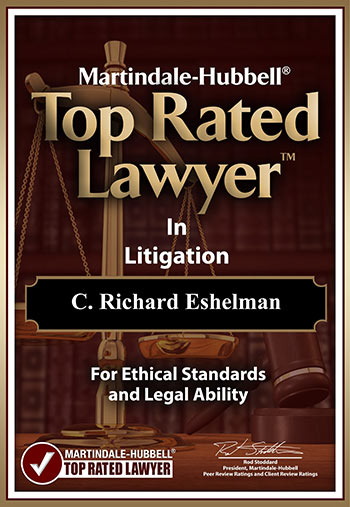Damages for Wrongful Death
Damages in wrongful death cases are intended to compensate for losses resulting from the death of a family member. Some losses are measurable a widow in a wrongful death suit, for example, could seek to recover the financial support that she would have received had her spouse lived. Other damages are more general in nature.
Types of recoverable damages include
- Direct Expenses: medical bills and funeral cost
- Loss of Benefits: what the person could have received in pension/retirement benefits had they lived
- Loss of Future Earnings: what the person who died would have earned in salary if he or she had lived
- Loss of Companionship: what the person who died would have emotionally provided to a relationship, and the mental pain and suffering resulting from the decedent’s death
Ohio law provides that you may recover damages to the extent a jury finds it fair and just in relation to the injury that resulted from the decedent’s death. O.R.C. Ann. § 2125.02.
Serving all N.E. Ohio & Columbus, Ohio
Call: 1-800-365-0001
Amount Of Damages
Calculating damages is a complex process involving multiple factors. Some factors include (1) how dependent the plaintiff was on the decedent; (2) the nature of the relationship with the decedent; (3) the anticipated lifespan of the decedent, (4) the anticipated earnings and other benefits of the decedent, and (5) the presence of any comparative fault. Often, determining the appropriate amount of damages for a particular element can be difficult. For example, when addressing damages for loss of companionship, a jury must attempt to put a price tag on the emotional loss you suffered from the decedent’s death.
An important element in wrongful death damage calculations is in estimating expected or future income losses. Future losses are the amount of earnings and benefits the decedent would have earned if he or she had lived. Therefore, it is common to take the victim’s earnings at the time of his or her death and calculate the remaining years until retirement (or expected death) to determine future loss of earnings.
Example: Suppose a spouse, 25 years of age, was earning $20,000 a year at the time of his death. Since he was not expected to retire or die for another 40 years, his yearly earnings at the time of his death would be multiplied by the number of years he was expected to work before retirement or expected death ($20,000 X 40 years). In this instance, his future loss is $800,000.
The example above is a simple explanation of how future loss calculations are made. Most of the time, however, the calculations can get very complicated. In most cases, a life expectancy table is used to estimate the number of years the decedent would have lived had he or she survived. So instead of just using retirement age as a standard for life expectancy, a life expectancy table may consider other factors that may increase or decrease the number of years the decedent would have been expected to live.
Present Value
When using a life expectancy table to calculate future losses, courts will often reduce the total future loss to a present dollar value. Because most wrongful death damage awards are paid in a lump sum, a beneficiary essentially receives the total amount of earnings and benefits the decedent would have made over the course of his/her life, reduced to a single amount which is discounted to present dollars.
Example: A spouse works in a department store earning $20,000 a year. Assuming he works there for the next 40 years, he will make a total of $800,000 by the 40th year. The spouse suddenly dies as a result of a wrongful death. The surviving spouse would recover a lump sum payment designed to compensate her for the $800,000 loss, discounted to present dollars.
How Is Present Value Calculated?
In order to calculate present value, the future loss is first calculated using the life expectancy table. Once the future loss amount is calculated, it is then discounted using a mathematical table. The mathematical table estimates today’s value of one dollar in the future based on the number of years the decedent was expected to live and an annual interest rate. After that is determined, the estimate from the table is multiplied by the decedent’s yearly salary. The purpose for using present value is that a successful plaintiff will receive a sum that, if invested at a reasonable interest rate, should equal the value of the future loss amount and cover expenses that may eventually arise if it is conservatively invested.
Distribution Of Damages
In wrongful death suits, more than one family member may be a beneficiary to an award amount. So how are damages distributed? Under Ohio law, the amount recovered is distributed in proportion to damages sustained by each particular individual. O.R.C. Ann. § 2125.02. If the party is the decedent’s estate, the total amount becomes an asset of the estate.
The Conclusion
The attorneys at the Eshelman Legal Group understand that no matter how cautious you are, others may not be so careful, and accidents do happen. So we hope you don’t need to, but if you are in a situation where you need the advice of an personal injury attorney, the Eshelman Legal Group is here to help you. For over 40 years we have been assisting accident victims, and we are here to assist you too... because “We’ll make things right.”
Ask yourself this question… who does the adjuster work for? The adjuster works for the insurance company, they do not work for you.
In all matters involving personal injury it is essential that measures be taken promptly to preserve evidence, investigate the accident in question, and file a lawsuit prior to the deadline imposed by the Statute of Limitations. If you or a loved one is a victim of personal injuries, call Eshelman Legal Group LLC, now at 1-800-365-0001. The initial consultation is free of charge, and if we agree to accept your case, we will work on a Contingent Fee basis, which means we get paid for our services only if there is a monetary award or recovery of funds. Don’t delay! You may have a valid claim and be entitled to compensation for your injuries, but a lawsuit must be filed before the statute of limitations expires. The above is not legal advice. That can only come from a qualified attorney who is familiar with all the facts and circumstances of a particular, specific case and the relevant law. See Terms of Use.






